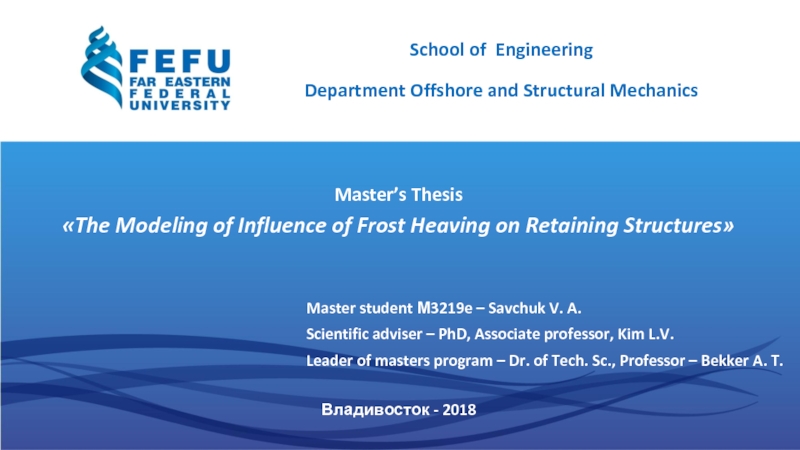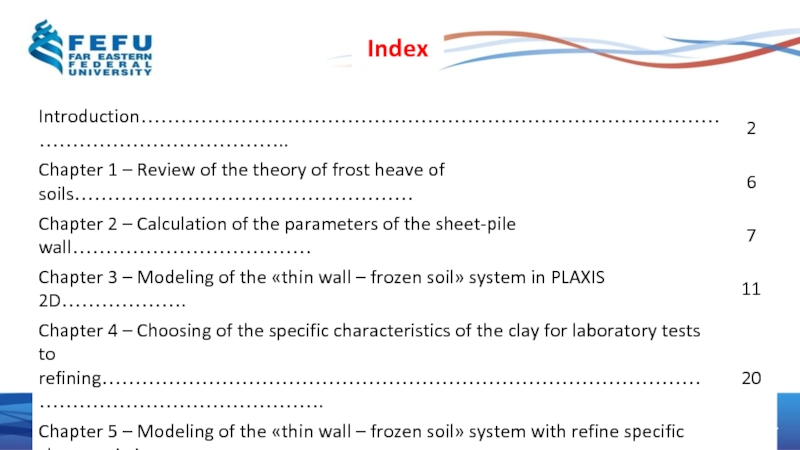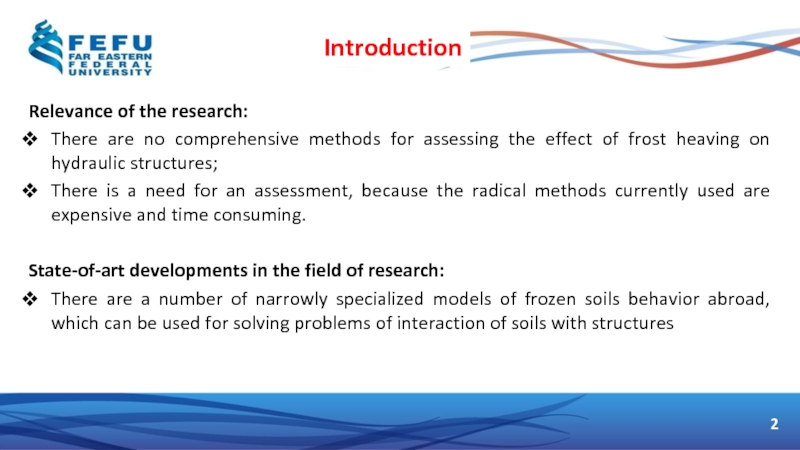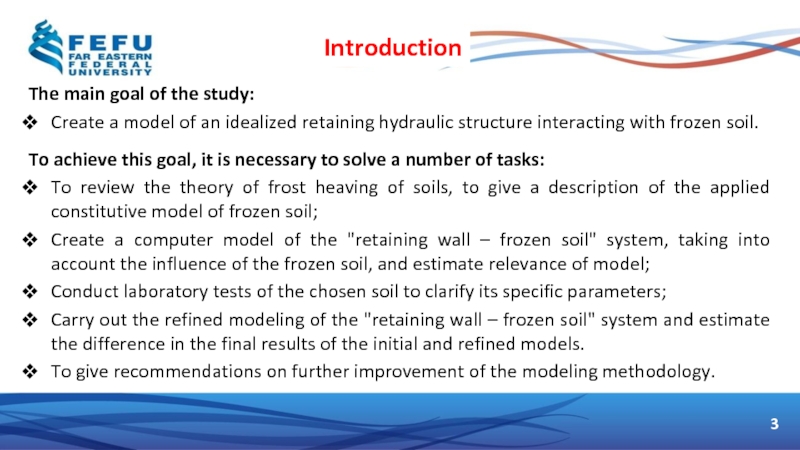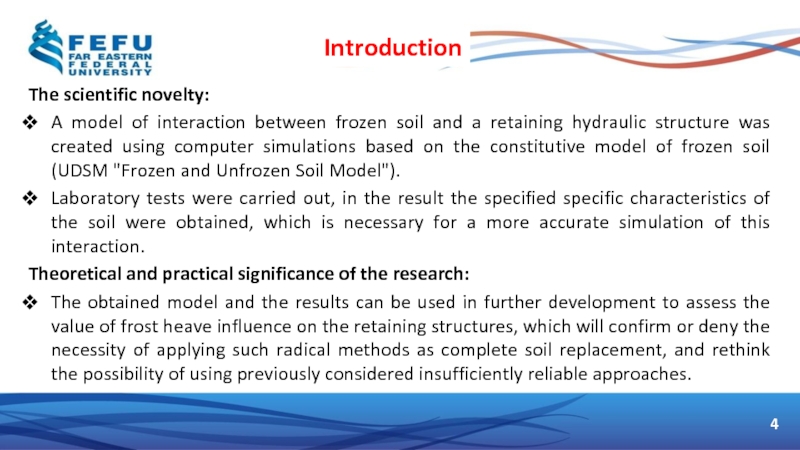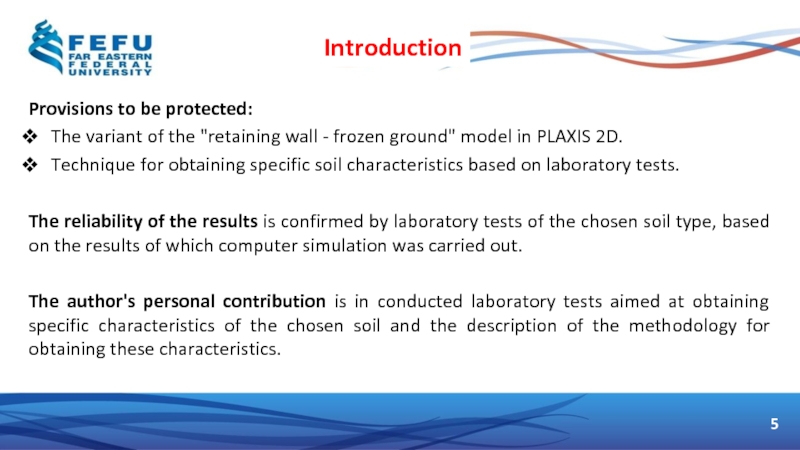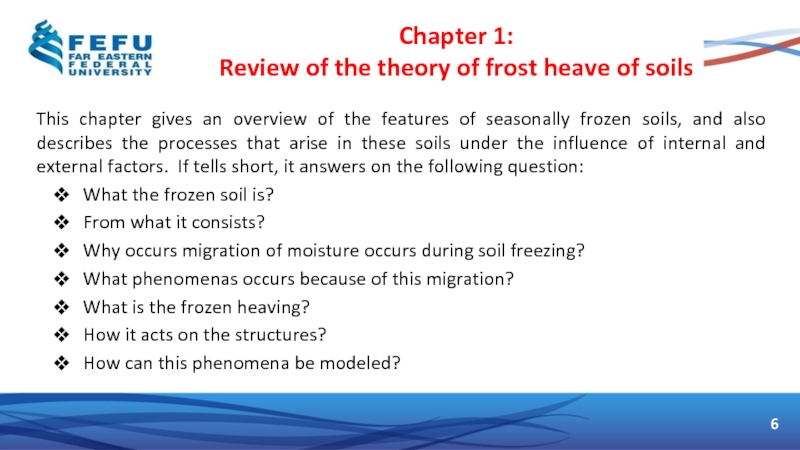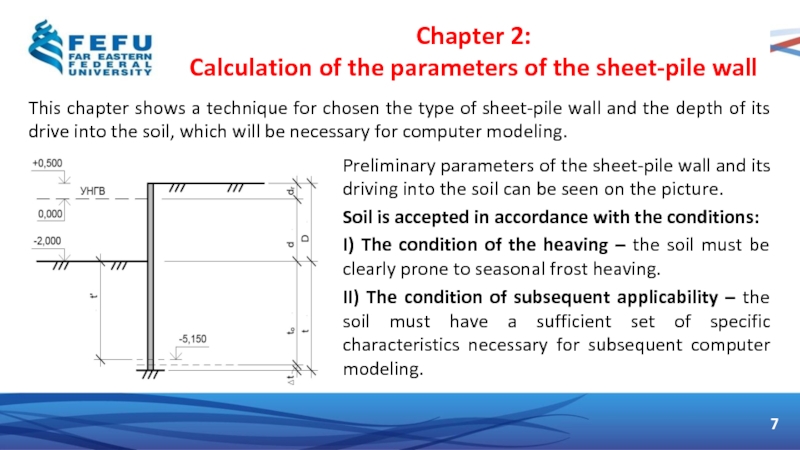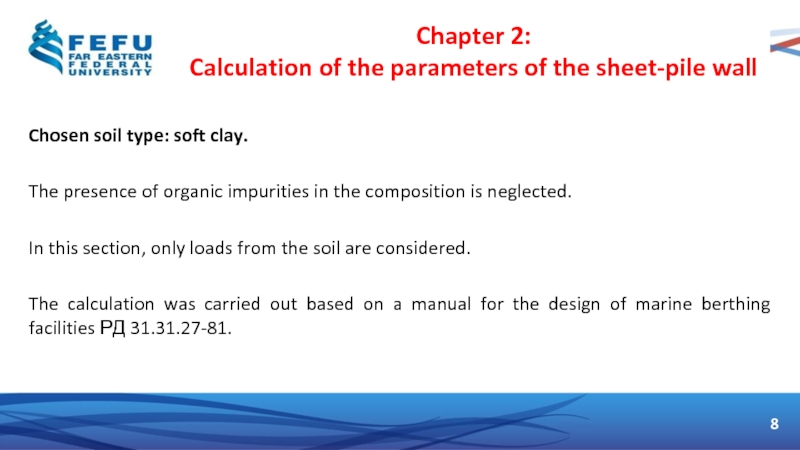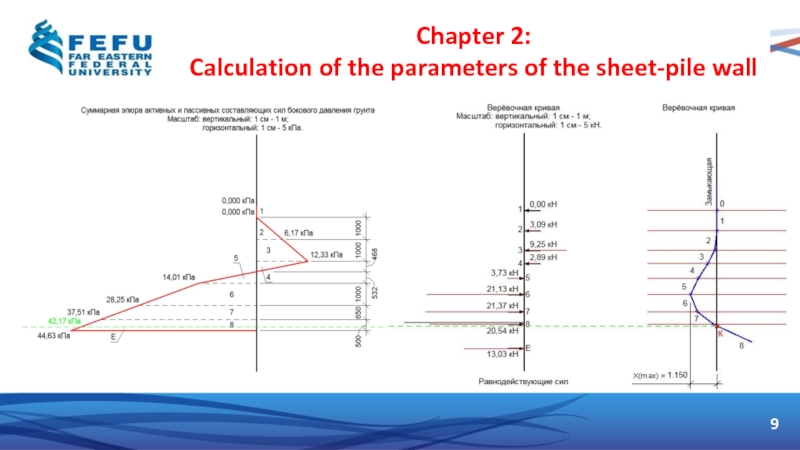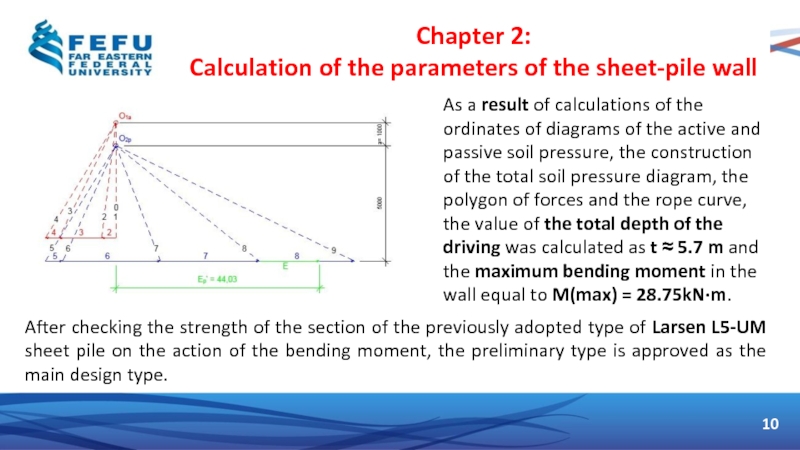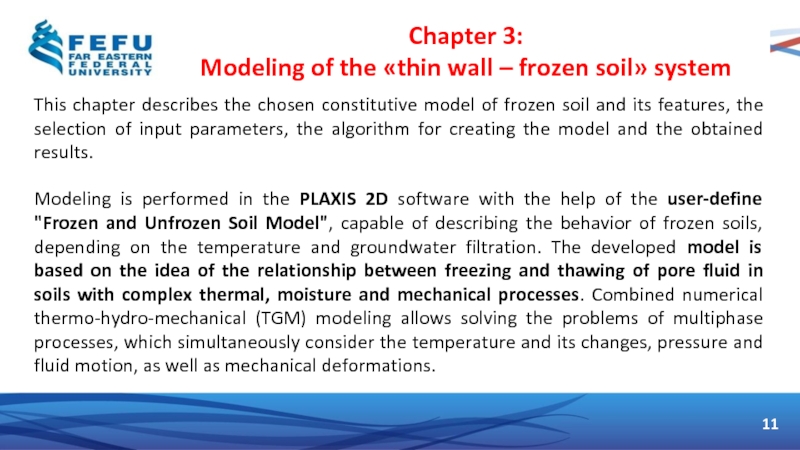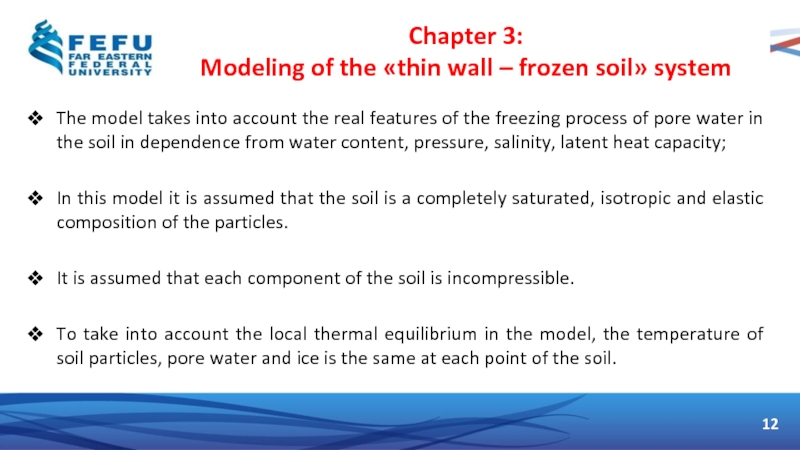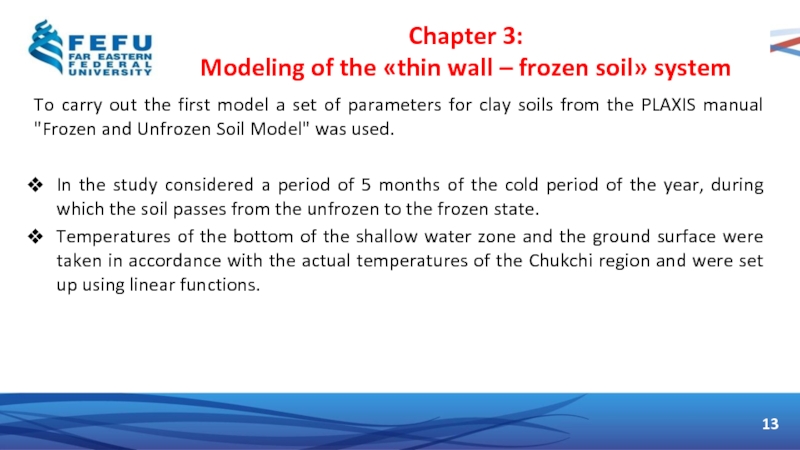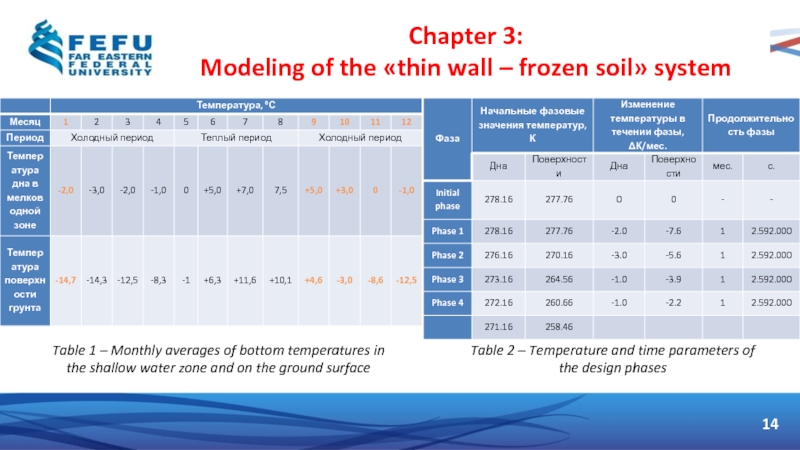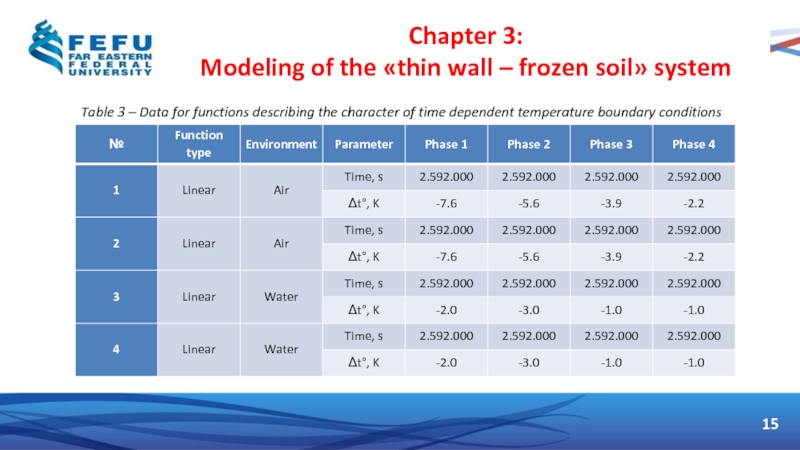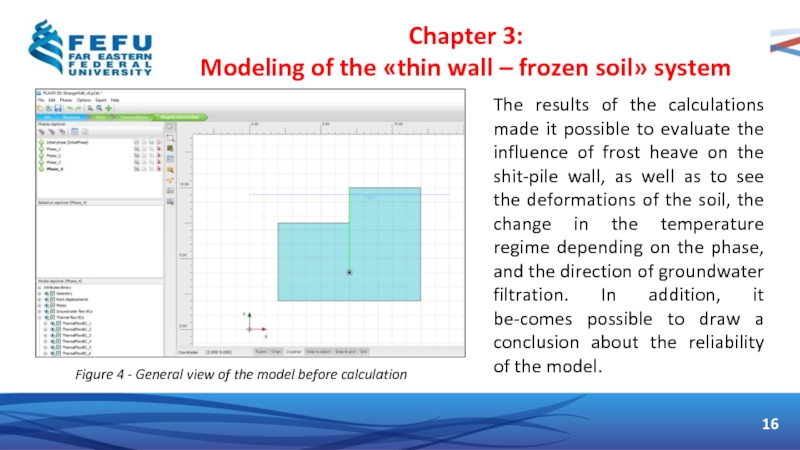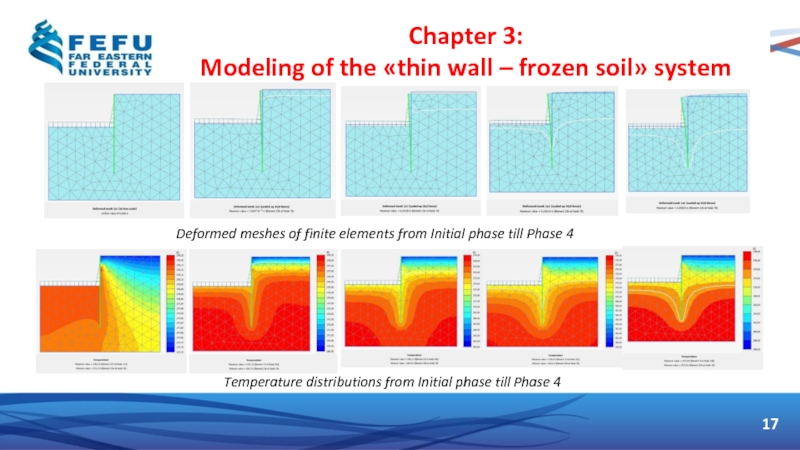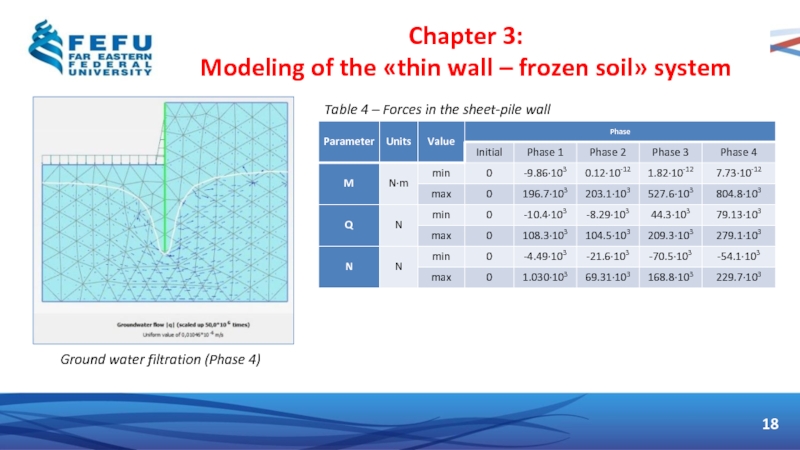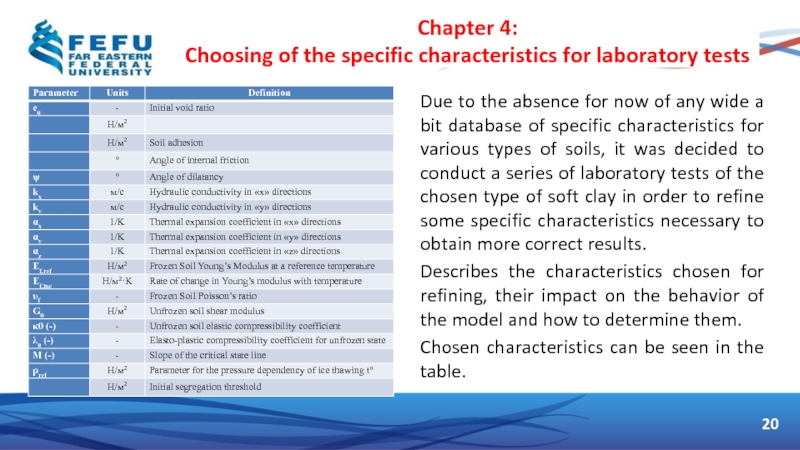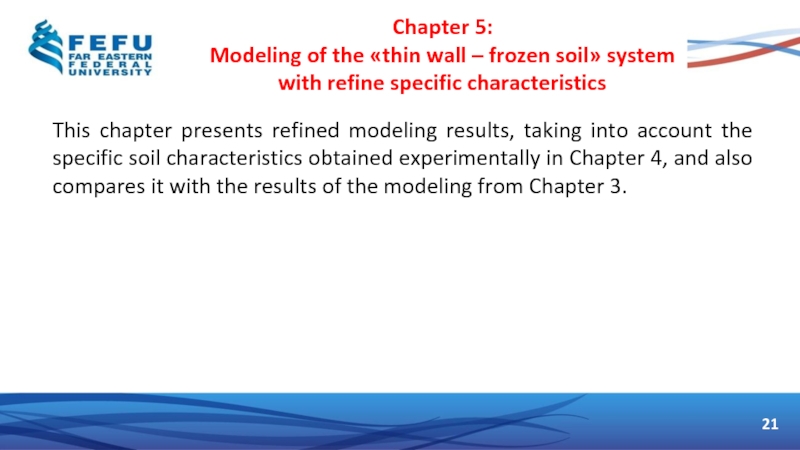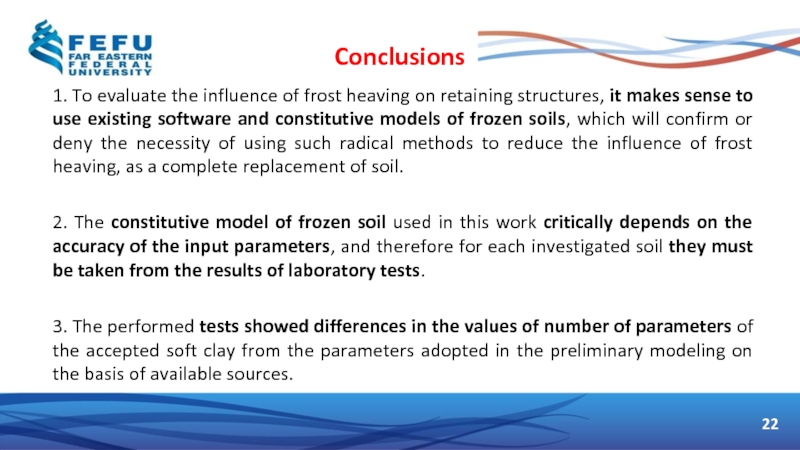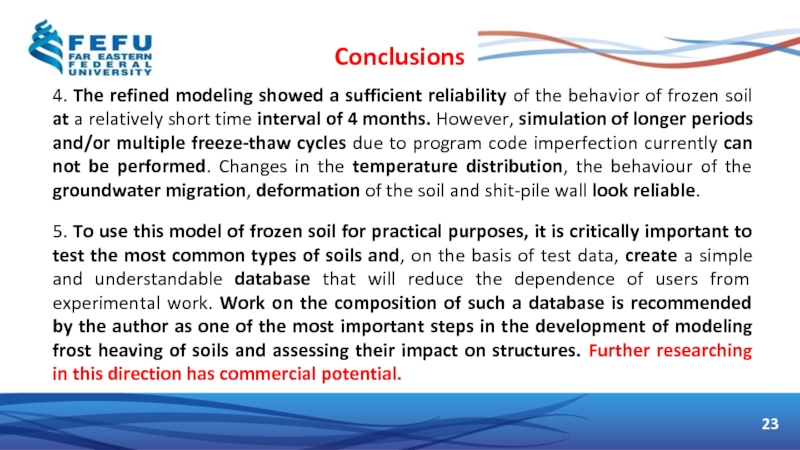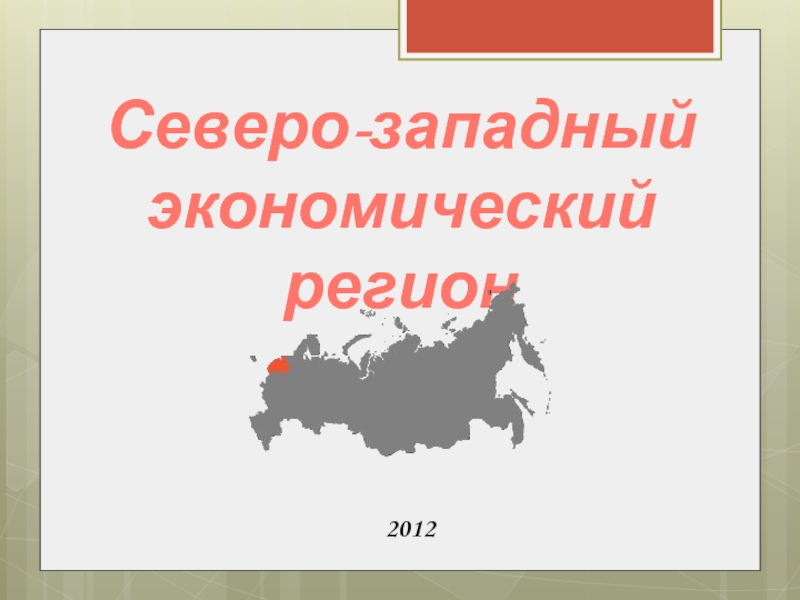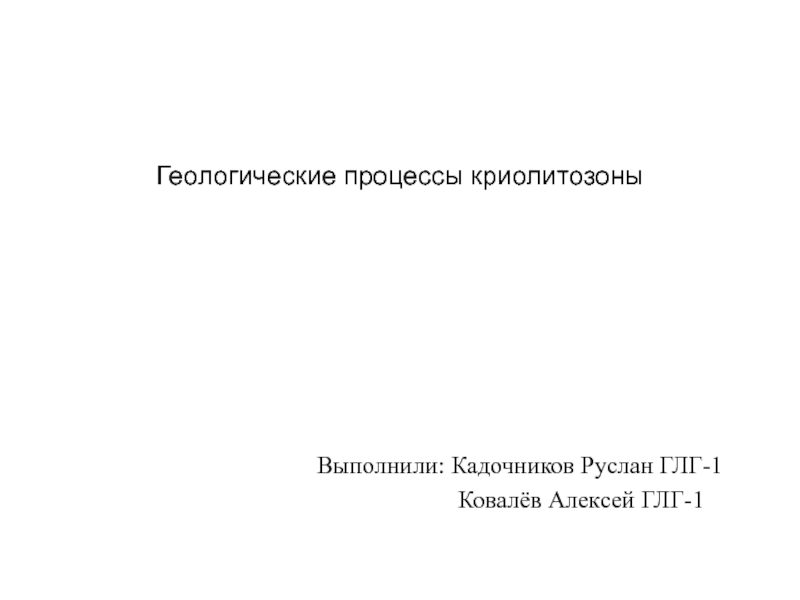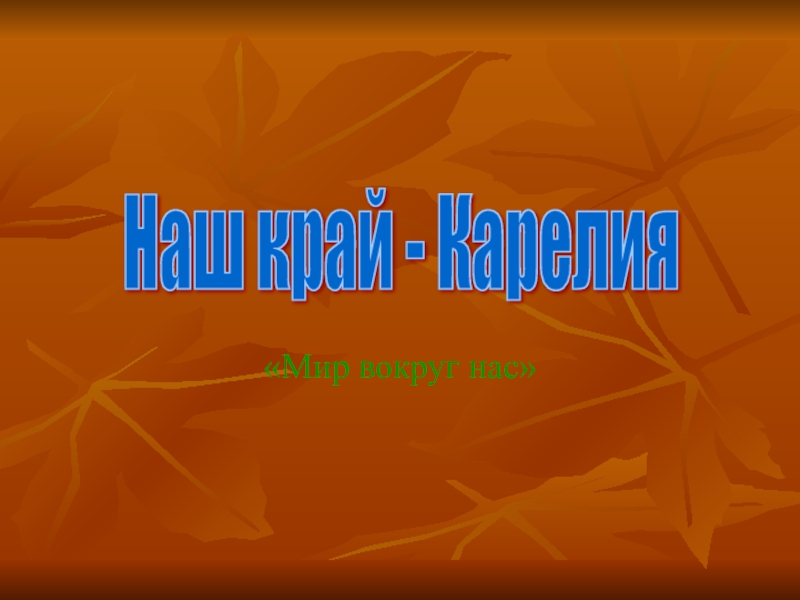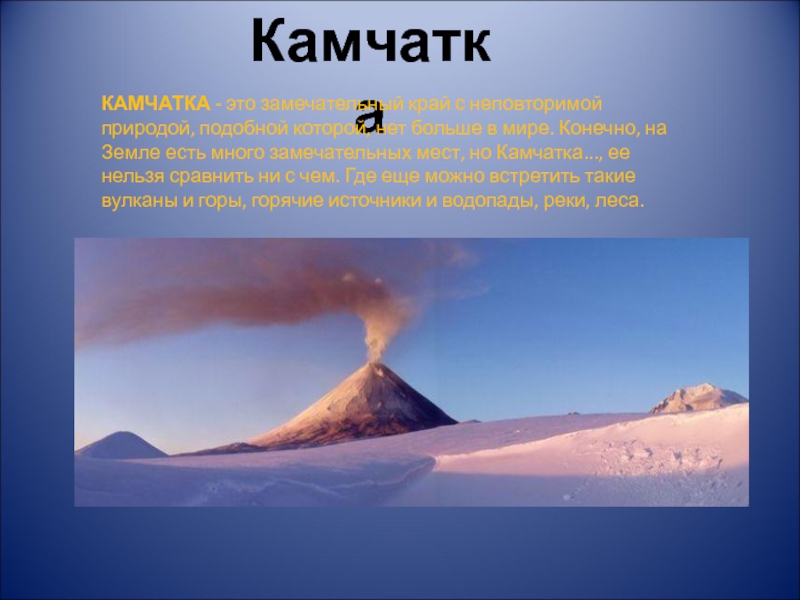Master student М3219e – Savchuk V. A.
Scientific adviser – PhD, Associate professor, Kim L.V.
Leader of masters program – Dr. of Tech. Sc., Professor – Bekker A. T.
- Главная
- Разное
- Дизайн
- Бизнес и предпринимательство
- Аналитика
- Образование
- Развлечения
- Красота и здоровье
- Финансы
- Государство
- Путешествия
- Спорт
- Недвижимость
- Армия
- Графика
- Культурология
- Еда и кулинария
- Лингвистика
- Английский язык
- Астрономия
- Алгебра
- Биология
- География
- Детские презентации
- Информатика
- История
- Литература
- Маркетинг
- Математика
- Медицина
- Менеджмент
- Музыка
- МХК
- Немецкий язык
- ОБЖ
- Обществознание
- Окружающий мир
- Педагогика
- Русский язык
- Технология
- Физика
- Философия
- Химия
- Шаблоны, картинки для презентаций
- Экология
- Экономика
- Юриспруденция
The Modeling of Influence of Frost Heaving on Retaining Structures презентация
Содержание
- 1. The Modeling of Influence of Frost Heaving on Retaining Structures
- 2. Index 1
- 3. Introduction Relevance of the research: There are
- 4. Introduction The main goal of the study:
- 5. Introduction The scientific novelty: A model
- 6. Introduction Provisions to be protected: The variant
- 7. Chapter 1: Review of the theory of
- 8. This chapter shows a technique for chosen
- 9. Chosen soil type: soft clay. The
- 10. 9 Chapter 2: Calculation of the parameters of the sheet-pile wall
- 11. 10 Chapter 2: Calculation of the parameters
- 12. This chapter describes the chosen constitutive model
- 13. The model takes into account the real
- 14. To carry out the first model a
- 15. 14 Chapter 3: Modeling of the «thin
- 16. 15 Chapter 3: Modeling of the «thin
- 17. The results of the calculations made it
- 18. 17 Chapter 3: Modeling of the «thin
- 19. 18 Chapter 3: Modeling of the «thin
- 20. 19 Chapter 3: Modeling of the «thin
- 21. 20 Chapter 4: Choosing of the specific
- 22. 21 Chapter 5: Modeling of the «thin
- 23. 22 Conclusions 1. To evaluate the influence
- 24. 23 Conclusions 4. The refined modeling showed
- 25. 24 Thanks for your attention!
Слайд 1
Владивосток - 2018
School of Engineering
Department Offshore and Structural Mechanics
Master’s Thesis
«The
Слайд 3Introduction
Relevance of the research:
There are no comprehensive methods for assessing the
There is a need for an assessment, because the radical methods currently used are expensive and time consuming.
State-of-art developments in the field of research:
There are a number of narrowly specialized models of frozen soils behavior abroad, which can be used for solving problems of interaction of soils with structures
2
Слайд 4Introduction
The main goal of the study:
Create a model of an
To achieve this goal, it is necessary to solve a number of tasks:
To review the theory of frost heaving of soils, to give a description of the applied constitutive model of frozen soil;
Create a computer model of the "retaining wall – frozen soil" system, taking into account the influence of the frozen soil, and estimate relevance of model;
Conduct laboratory tests of the chosen soil to clarify its specific parameters;
Carry out the refined modeling of the "retaining wall – frozen soil" system and estimate the difference in the final results of the initial and refined models.
To give recommendations on further improvement of the modeling methodology.
3
Слайд 5Introduction
The scientific novelty:
A model of interaction between frozen soil and
Laboratory tests were carried out, in the result the specified specific characteristics of the soil were obtained, which is necessary for a more accurate simulation of this interaction.
Theoretical and practical significance of the research:
The obtained model and the results can be used in further development to assess the value of frost heave influence on the retaining structures, which will confirm or deny the necessity of applying such radical methods as complete soil replacement, and rethink the possibility of using previously considered insufficiently reliable approaches.
4
Слайд 6Introduction
Provisions to be protected:
The variant of the "retaining wall - frozen
Technique for obtaining specific soil characteristics based on laboratory tests.
The reliability of the results is confirmed by laboratory tests of the chosen soil type, based on the results of which computer simulation was carried out.
The author's personal contribution is in conducted laboratory tests aimed at obtaining specific characteristics of the chosen soil and the description of the methodology for obtaining these characteristics.
5
Слайд 7Chapter 1:
Review of the theory of frost heave of soils
This chapter
What the frozen soil is?
From what it consists?
Why occurs migration of moisture occurs during soil freezing?
What phenomenas occurs because of this migration?
What is the frozen heaving?
How it acts on the structures?
How can this phenomena be modeled?
6
Слайд 8This chapter shows a technique for chosen the type of sheet-pile
7
Chapter 2:
Calculation of the parameters of the sheet-pile wall
Preliminary parameters of the sheet-pile wall and its driving into the soil can be seen on the picture.
Soil is accepted in accordance with the conditions:
I) The condition of the heaving – the soil must be clearly prone to seasonal frost heaving.
II) The condition of subsequent applicability – the soil must have a sufficient set of specific characteristics necessary for subsequent computer modeling.
Слайд 9Chosen soil type: soft clay.
The presence of organic impurities in the
In this section, only loads from the soil are considered.
The calculation was carried out based on a manual for the design of marine berthing facilities РД 31.31.27-81.
8
Chapter 2:
Calculation of the parameters of the sheet-pile wall
Слайд 1110
Chapter 2:
Calculation of the parameters of the sheet-pile wall
As a result
After checking the strength of the section of the previously adopted type of Larsen L5-UM sheet pile on the action of the bending moment, the preliminary type is approved as the main design type.
Слайд 12This chapter describes the chosen constitutive model of frozen soil and
Modeling is performed in the PLAXIS 2D software with the help of the user-define "Frozen and Unfrozen Soil Model", capable of describing the behavior of frozen soils, depending on the temperature and groundwater filtration. The developed model is based on the idea of the relationship between freezing and thawing of pore fluid in soils with complex thermal, moisture and mechanical processes. Combined numerical thermo-hydro-mechanical (TGM) modeling allows solving the problems of multiphase processes, which simultaneously consider the temperature and its changes, pressure and fluid motion, as well as mechanical deformations.
11
Chapter 3:
Modeling of the «thin wall – frozen soil» system
Слайд 13The model takes into account the real features of the freezing
In this model it is assumed that the soil is a completely saturated, isotropic and elastic composition of the particles.
It is assumed that each component of the soil is incompressible.
To take into account the local thermal equilibrium in the model, the temperature of soil particles, pore water and ice is the same at each point of the soil.
12
Chapter 3:
Modeling of the «thin wall – frozen soil» system
Слайд 14To carry out the first model a set of parameters for
In the study considered a period of 5 months of the cold period of the year, during which the soil passes from the unfrozen to the frozen state.
Temperatures of the bottom of the shallow water zone and the ground surface were taken in accordance with the actual temperatures of the Chukchi region and were set up using linear functions.
13
Chapter 3:
Modeling of the «thin wall – frozen soil» system
Слайд 1514
Chapter 3:
Modeling of the «thin wall – frozen soil» system
Table 1
Table 2 – Temperature and time parameters of the design phases
Слайд 1615
Chapter 3:
Modeling of the «thin wall – frozen soil» system
Table 3
Слайд 17The results of the calculations made it possible to evaluate the
16
Chapter 3:
Modeling of the «thin wall – frozen soil» system
Figure 4 - General view of the model before calculation
Слайд 1817
Chapter 3:
Modeling of the «thin wall – frozen soil» system
Deformed meshes
Temperature distributions from Initial phase till Phase 4
Слайд 1918
Chapter 3:
Modeling of the «thin wall – frozen soil» system
Ground water
Table 4 – Forces in the sheet-pile wall
Слайд 2019
Chapter 3:
Modeling of the «thin wall – frozen soil» system
Estimating the
Temperature distributions and the behaviour of their changes over time, depending on the external conditions and properties of the sheet pile wall material, appear to be reliable. This is clearly seen from the displacement of the zero-isotherm line. The effect of the steel wall on cooling the ground is also clearly visible.
The nature of migration of soil moisture up to phase 4 is not reliable. But in phase 4, when the sheet-pill wall is completely surrounded by frozen soil, migration of moisture becomes reliable – it exists in the unfrozen ground below the freezing front and is absent in the frozen zone, remaining in it only in the form of pellicular moisture.
The nature and magnitude of the frost heave, as well as its influence on the sheet pile wall, depends directly on a number of specific characteristics of the soil. As it was noted earlier, the used characteristics are not exact values for the chosen type of soft clay, so talk of complete reliability of the results, despite the similarity of the result obtained with the proposed (some settlement that can be seen in the model are also exists in nature during the initial period of clay freezing), – is incorrect.
Слайд 2120
Chapter 4:
Choosing of the specific characteristics for laboratory tests
Due to the
Describes the characteristics chosen for refining, their impact on the behavior of the model and how to determine them.
Chosen characteristics can be seen in the table.
Слайд 2221
Chapter 5:
Modeling of the «thin wall – frozen soil» system with
This chapter presents refined modeling results, taking into account the specific soil characteristics obtained experimentally in Chapter 4, and also compares it with the results of the modeling from Chapter 3.
Слайд 2322
Conclusions
1. To evaluate the influence of frost heaving on retaining structures,
2. The constitutive model of frozen soil used in this work critically depends on the accuracy of the input parameters, and therefore for each investigated soil they must be taken from the results of laboratory tests.
3. The performed tests showed differences in the values of number of parameters of the accepted soft clay from the parameters adopted in the preliminary modeling on the basis of available sources.
Слайд 2423
Conclusions
4. The refined modeling showed a sufficient reliability of the behavior
5. To use this model of frozen soil for practical purposes, it is critically important to test the most common types of soils and, on the basis of test data, create a simple and understandable database that will reduce the dependence of users from experimental work. Work on the composition of such a database is recommended by the author as one of the most important steps in the development of modeling frost heaving of soils and assessing their impact on structures. Further researching in this direction has commercial potential.
